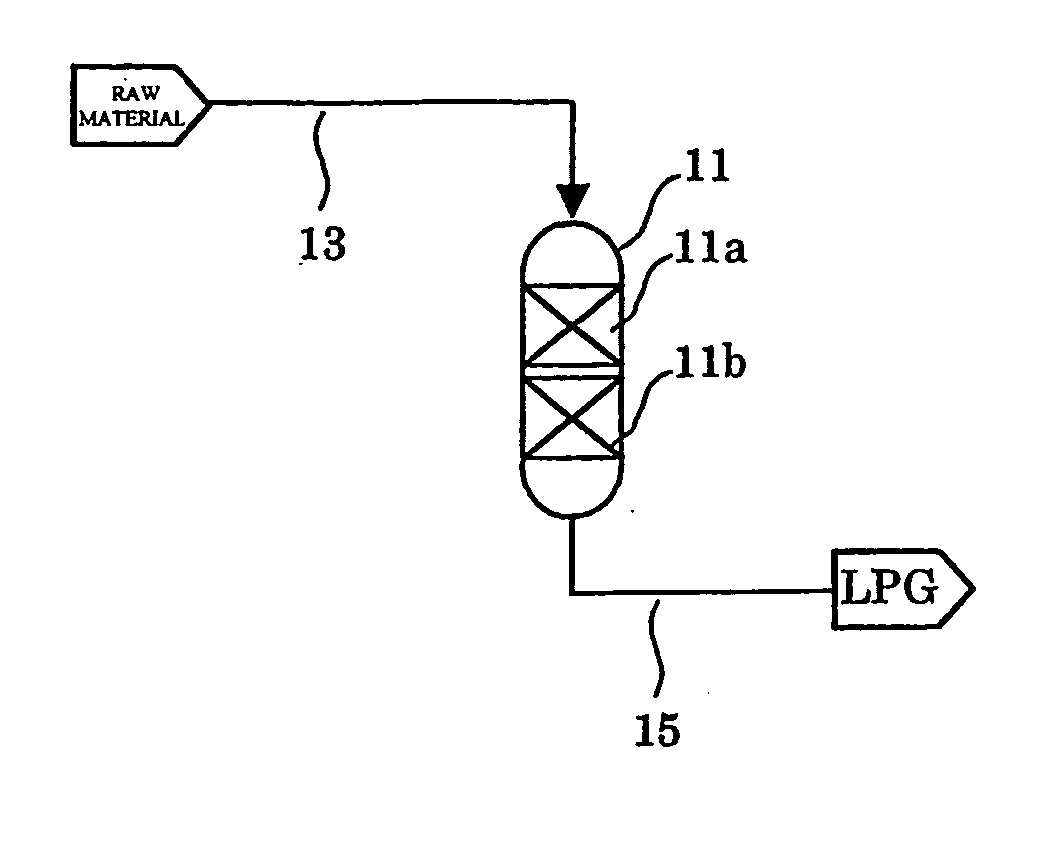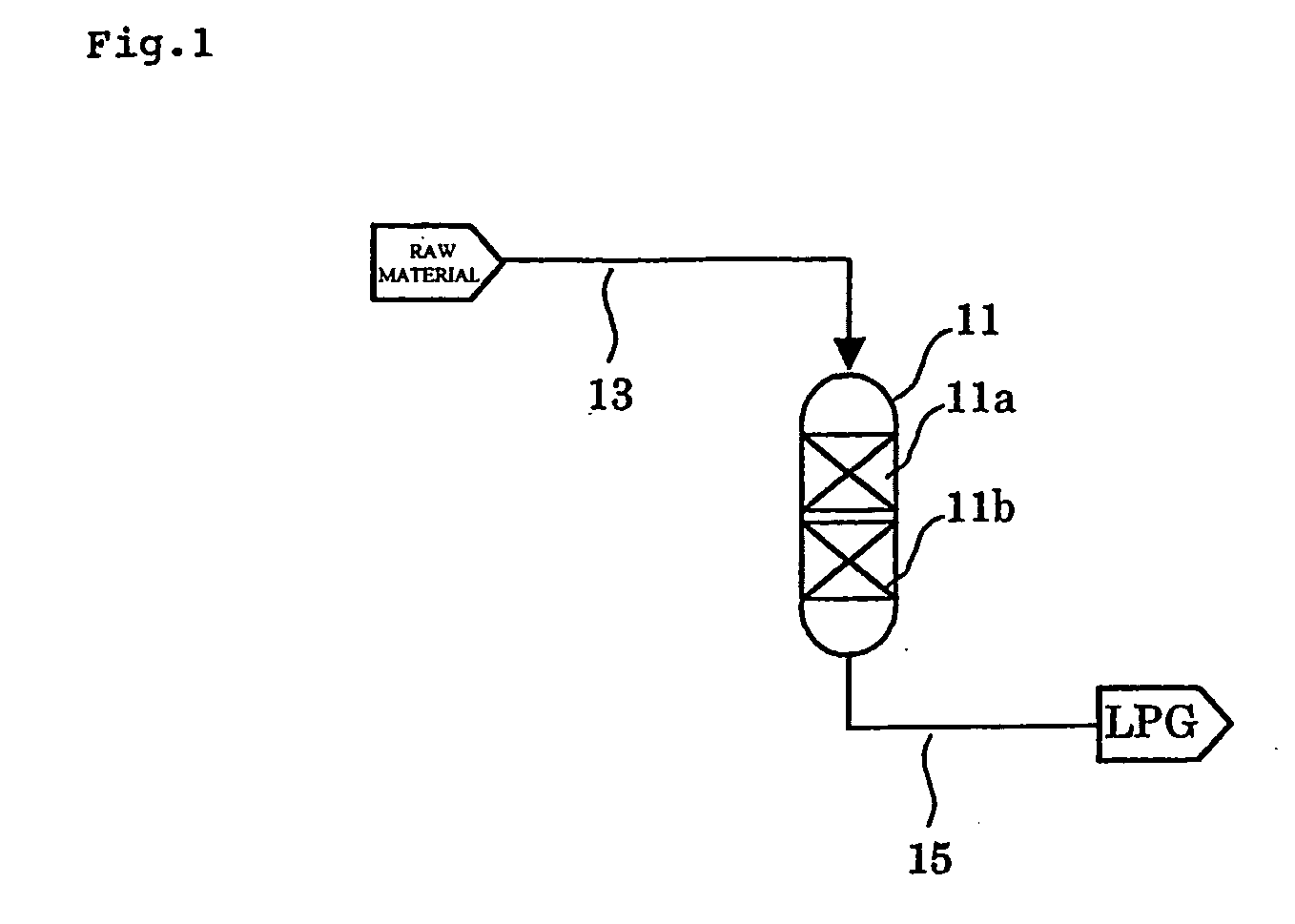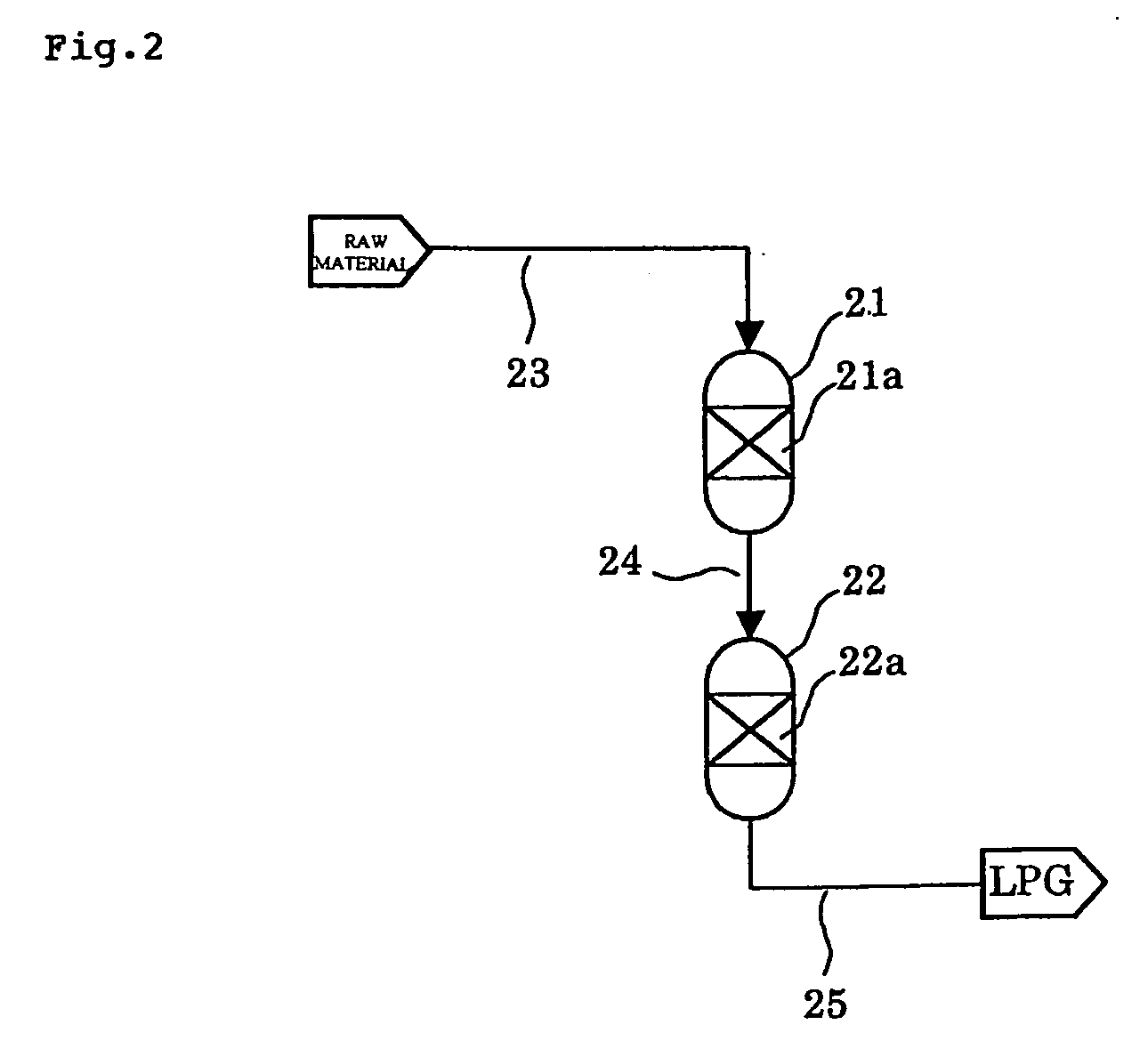Method for producing liquefied petroleum gas
a technology of liquefied petroleum gas and process, which is applied in the direction of gaseous fuels, fuels, organic chemistry, etc., can solve the problems that the product of the process may not be suitable for lpg products, and achieve the effect of increasing the final yield of propylene and/or butene and increasing the yield
- Summary
- Abstract
- Description
- Claims
- Application Information
AI Technical Summary
Benefits of technology
Problems solved by technology
Method used
Image
Examples
example 1
[0208] An LPG was prepared using the LPG production apparatus shown in FIG. 1. The used catalyst for synthesizing an olefin-containing gas was a catalyst prepared by mixing 73.5% by dry weight of H-ZSM-5 with a Si / Al ratio (atomic ratio) of 25.0 and 26.5% by dry weight of alumina binder (Cataloid AP; produced by Catalysts & Chemicals Ind. Co., Ltd.), and then wet molding, drying and calcining the mixture. The used catalyst for hydrogenating an olefin-containing gas was a 2.0 wt % Pt / carbon catalyst (produced by N.E. ChemCat Corporation). Both the catalyst for synthesizing an olefin-containing gas and the catalyst for hydrogenating an olefin-containing gas were a 1 / 32-inch cylindrical extrusion-molded article having the same shape.
[0209] A raw material gas with a composition of 50 mol % of methanol and 50 mol % of hydrogen was passed through a catalyst layer comprising a first catalyst layer consisting of the above catalyst for synthesizing an olefin-containing gas as the front half...
example 2
[0211] An LPG was prepared using the LPG production apparatus shown in FIG. 2. The used Catalysts for synthesizing an olefin-containing gas were the catalyst for synthesizing an olefin-containing gas used in Example 1, and a catalyst in which 0.2 wt % Pt was supported on the catalyst for synthesizing an olefin-containing gas used in Example 1 (hereinafter, referred to as a “catalyst for isomerizing and hydrogenating an olefin-containing gas”). The used catalyst for hydrogenating an olefin-containing gas was the catalyst for hydrogenating an olefin-containing gas used in Example 1. This catalyst for isomerizing and hydrogenating an olefin-containing gas is a catalyst for synthesizing an olefin-containing gas having catalytic function for hydrogenating an olefin.
[0212] A raw material gas with the same composition as in Example 1 was passed through a first catalyst layer consisting of the above catalyst for synthesizing an olefin-containing gas in ⅔ (by volume) part from the inlet, an...
example 3
[0215] An LPG was prepared using the LPG production apparatus shown in FIG. 3. The used catalyst for synthesizing an olefin-containing gas was the catalyst for synthesizing an olefin-containing gas used in Example 1. The used Catalysts for hydrogenating an olefin-containing gas were the catalyst for hydrogenating an olefin-containing gas used in Example 1, and the catalyst for isomerizing and hydrogenating an olefin-containing gas used in Example 2.
[0216] A raw material gas with a composition of 50 mol % of methanol and 50 mol % of steam was passed through a first catalyst layer consisting of the above catalyst for synthesizing an olefin-containing gas. The reaction conditions were as follows; as reaction temperature, the inlet control temperature of a reactor was 330° C. and the maximum temperature of a catalyst layer was 365° C.; the reaction pressure: partial pressure of methanol was 70 kPa; the liquid space velocity of methanol to the catalyst in the first catalyst layer was 40...
PUM
 Login to View More
Login to View More Abstract
Description
Claims
Application Information
 Login to View More
Login to View More - Generate Ideas
- Intellectual Property
- Life Sciences
- Materials
- Tech Scout
- Unparalleled Data Quality
- Higher Quality Content
- 60% Fewer Hallucinations
Browse by: Latest US Patents, China's latest patents, Technical Efficacy Thesaurus, Application Domain, Technology Topic, Popular Technical Reports.
© 2025 PatSnap. All rights reserved.Legal|Privacy policy|Modern Slavery Act Transparency Statement|Sitemap|About US| Contact US: help@patsnap.com



